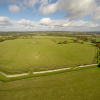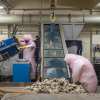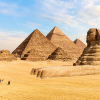Articles
This article describes how gamma-ray spectroscopy can reveal new features in buried archaeological sites. In her case at the Roman settlement of Silchester in Hampshire, UK, and other sites.
Getting your sampling right can hardly be more important than in the nuclear waste industry. This column describes how the Belgian nuclear waste processing has benefited from the Theory of Sampling, and how it has led to important insights leading to significant potential improvements in the field of radioactive waste characterisation.
Roman concrete is well known and has lasted well. Now, it seems that the Egyptians used concrete to build at least some of their pyramids. Guy Demortier reports that PIGE and PIXE analyses have revealed the presence of carbon clusters in the material used to build the Khufu (Great) pyramid at Giza. This fits with a model of construction in which the blocks were cast in situ rather than cut out of stone and somehow moved into place. There’s always something new to be learnt!
It is difficult to provide practical experience with gamma spectroscopy in undergraduate laboratories, and the authors have been investigating alternative sources, and the 138La isotope is a suitable candidate. As well as some background on gamma spectroscopy and radiochemistry, Marco and Valentina also provide some sample exercises that could be used for undergraduate practicals.
Tony Davies continues his quest to find out what you all need to work more efficiently. You will remember that in the last issue, Tony introduced his survey to discover what developments were needed in spectroscopy by readers. Some of the initial responses are explored, and Tony finds that he has opened a “can of worms”.






